I want to generalize this question: How to crop away convexity defects. Situation described there is clear to me but I have more complex situation: I have a contour which can have not only convex, but a concave defects:

Blue is the contour I have and red is a rectangle I want - it can be rotated rectangle in general, so I need 4-point rectangular contour with area is as close as possible to the given contour. I'm looking for algorithm on how this transformation function could be implemented and it would be nice if it will be illustrated with code.